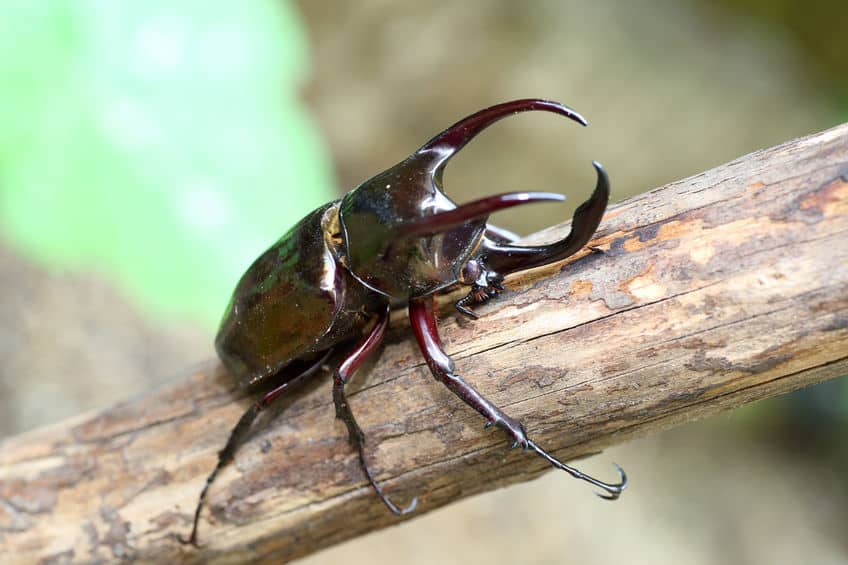The Giant scoliid wasp, Megascolia procer, is a solitary wasp found in Indonesia.
How big are giant scoliid wasps?
Giant scoliid wasps are potentially the biggest recorded wasp. They have a huge wingspan of 4.5 inches (11.5 cm). They are up to 2.5 inches (6.3 cm) in length. Go here to see the other huge wasp species.
What do giant scoliid wasps prey on?
They prey on Atlas beetle larvae. The grubs of the atlas beetle are stung, paralyzed, and brought back to the giant scoliid nest. Still alive the giant scoliid wasp larva consumes the grub. There are so many nutrients in these grubs that the larva grows into a very large wasp. The Atlas beetle and its grubs are very large and are known for their three large horns. An adult atlas beetle can grow up to 5 inches in length (12.5 cm). The atlas beetle larva is actually quite fierce and is known to bite, but they are no match for the sting of the scoliid wasp.

What is unique about the giant scoliid wasps wings?
They have opaque iridescent wings. Their wings seen from different angles show altering bright colors. This striking appearance is caused by a transparent layer that completely covers each wing. The wings have a high amount of melanin which makes them opaque. (source)

Where are giant scoliid wasps mostly seen?
They are rarely seen in urban environments. These wasps are solitary so spend most of their lives alone. They are found in forests and woodland in the same environments as Atlas beetles. The species relies on Atlas beetle larva to feed their young and so they can only live in environments where they are found. For this reason, they are unable to migrate to new areas.
Are giant scoliid wasps a threat to people?
Despite their huge size, they offer no threat to humans. Unlike social wasps, they do not aggressively defend a nest. In fact, after laying their eggs and providing a paralyzed grub for it to feed off the giant scoliid beetle leaves its offspring to its own devices and does no more to help with its development. Their sting is not especially painful to humans and is designed to paralyze, not kill its prey.
